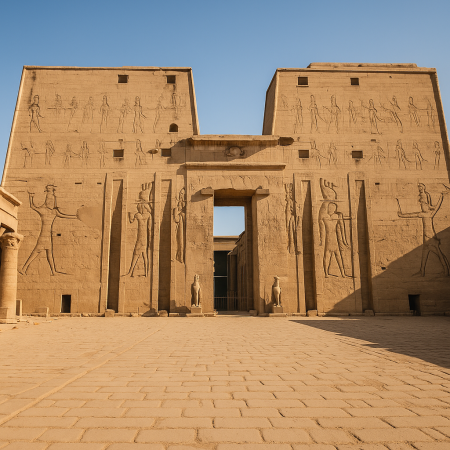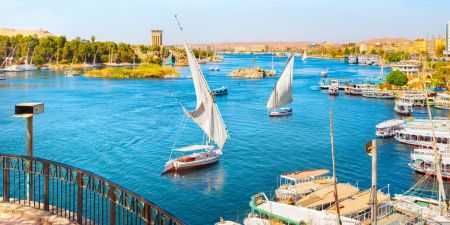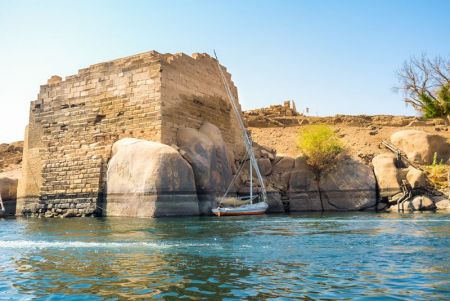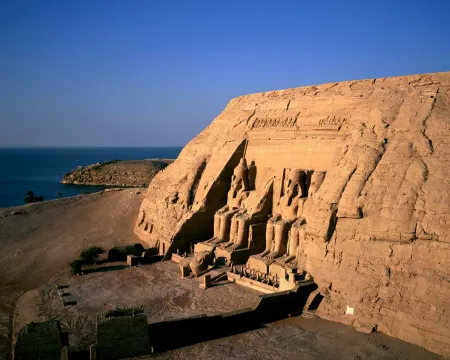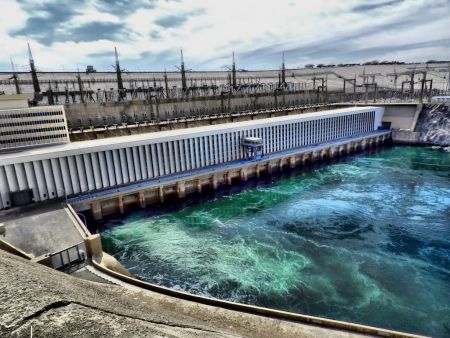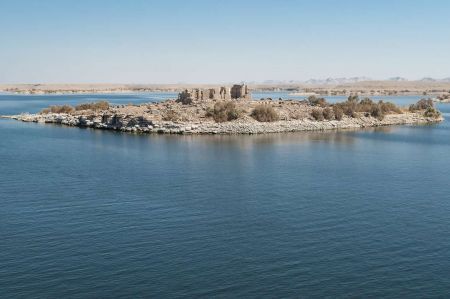Temple of Philae: The Sacred Island Sanctuary of Isis
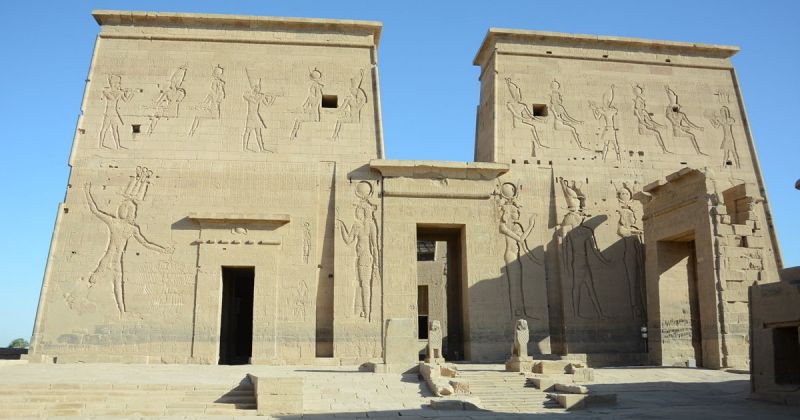
Rising serenely from the tranquil waters of Lake Nasser, the Temple of Philae is one of Egypt’s most enchanting and symbolic ancient monuments. Dedicated to the goddess Isis, the temple complex once stood on Philae Island, near the First Cataract of the Nile in Aswan. Its legends are rooted in myth, magic, resurrection, and divine motherhood—making Philae a spiritual beacon for centuries.
Yet, this temple isn’t only remarkable for its architecture and religious significance—it’s also a modern miracle. After the construction of the Aswan High Dam in the 20th century, the rising waters of the Nile threatened to submerge Philae forever. In an extraordinary feat of engineering and international cooperation, the entire complex was dismantled and relocated to Agilkia Island stone by stone. Today, the Temple of Philae stands proudly in its new home, mirroring the serenity and grace of its original setting.
Surrounded by lotus-filled waters and flanked by colonnades, pylons, and hieroglyphic-covered walls, the Temple of Philae continues to captivate visitors from around the world. It isn’t just a place to explore—it’s a place to feel: the power of love, the whispers of ancient rituals, and the resilience of human heritage.
Historical Significance of the Temple of Philae
Built in Honor of Isis—Egypt’s Beloved Goddess
Construction of the main temple began during the Ptolemaic period, around the 3rd century BCE, and was later expanded by Roman emperors such as Augustus, Tiberius, and Hadrian. Though its architecture resembles older Egyptian styles, Philae was built when Egypt was under Greek and Roman rule. This fusion of cultures gave Philae a unique role: a last stronghold of ancient Egyptian religion.
The Temple of Isis served as a vital center of pilgrimage, ritual, and healing. Isis—wife of Osiris and mother of Horus—represented rebirth, magic, and maternal power. Her cult extended across the Mediterranean, but Philae was considered her most sacred sanctuary.
The Last Place of Ancient Egyptian Worship
Philae remained active as a religious site even after Christianity spread across Egypt. In fact, it was one of the last places where hieroglyphs were ever written. The final known inscription, dated to 394 CE, marks the end of over 3,000 years of hieroglyphic tradition. Eventually, Christian missionaries repurposed some temple rooms into churches, carving crosses over Isis’s image and painting over ancient reliefs.
Architecture and Layout of Philae Temple Complex
Grand Entrance: The First Pylon and Courtyard
Visitors arriving by boat are greeted by the towering First Pylon, adorned with massive reliefs of Ptolemaic kings striking down enemies in the presence of Isis and Horus. Passing through the pylon leads into an open forecourt, framed by colonnades and offering a breathtaking view of the main sanctuary.
The Birth House (Mammisi)
To the right of the courtyard lies the Mammisi, or Birth House, where rituals surrounding the birth of Horus were celebrated. This small yet symbolic structure features charming carvings of divine nursing scenes, underlining Isis’s role as mother and protector of the pharaoh.
The Inner Temple of Isis
Deeper inside, the main sanctuary is flanked by decorated chambers, priestly quarters, and chapels. At the heart lies the Holy of Holies, where the sacred image or statue of Isis would have been kept. The entire temple is a narrative in stone, with vivid reliefs showing offerings, rituals, and mythological tales.
Kiosk of Trajan: The Unfinished Gem
At the island’s edge stands the iconic Kiosk of Trajan, often called Pharaoh’s Bed. With its 14 open columns and delicate carvings, this incomplete structure remains one of the most photographed spots in Egypt—especially at sunset. Built by the Romans, it demonstrates the continuation of Egyptian religious customs under foreign rule.
Book a journey tailored for you with Egypt Private Tours
The Relocation of Philae: A Global Effort to Save Heritage
The Threat of Submersion
The completion of the Aswan High Dam in the 1960s caused Lake Nasser’s water level to rise dramatically, threatening to engulf numerous Nubian monuments—including Philae. For decades prior, the temple was seasonally submerged, with only the tops of its columns visible during flood seasons.
UNESCO’s Rescue Mission
Between 1972 and 1980, UNESCO led a major initiative to save the Temple of Philae. The complex was dismantled into over 40,000 blocks, carefully catalogued, and relocated to nearby Agilkia Island, which was reshaped to resemble the original Philae. This successful effort is considered one of the greatest heritage preservation feats of the modern era.
Cultural Legacy and Symbolism of Philae
Myth of Isis, Osiris, and Horus
Philae was more than just a temple—it was the spiritual stage for one of Egypt’s greatest myths. According to legend:
-
Osiris was killed and dismembered by his jealous brother Set.
-
Isis, his wife, searched for his body parts, reassembled him, and miraculously conceived their son, Horus.
-
Horus grew up to avenge his father and reclaim the throne of Egypt.
This myth, reenacted in rituals at Philae, symbolized life after death, justice, healing, and resurrection. Pilgrims traveled from across the ancient world to connect with this divine drama and seek Isis’s blessings.
Influence on Mediterranean Religion
As Isis’s worship spread throughout the Greco-Roman world, Philae became a pan-Mediterranean spiritual hub, with its priesthood retaining influence even into the Christian era. The goddess's appeal—combining compassion, power, and mystery—transcended borders and faiths.
Visiting the Temple of Philae Today
How to Get There
Philae is located just south of Aswan. Visitors reach the site via a short motorboat ride from the Philae Marina. Many Aswan day tours include Philae, often combined with stops at the High Dam and the Unfinished Obelisk.
Best Time to Visit
October to April offers cooler, more comfortable temperatures. Early morning or late afternoon visits are ideal for photography and avoiding crowds. Evening visitors can also enjoy the Philae Sound and Light Show, which dramatically tells the temple’s story under the stars.
Visitor Tips
-
Wear comfortable shoes and bring sun protection.
-
Hire a certified guide to understand the myths, architecture, and hidden meanings.
-
Allow 1.5–2 hours to fully explore the temple complex.
Frequently Asked Questions About the Temple of Philae
What was the Temple of Philae used for?
It was a sacred site dedicated to the goddess Isis, where rituals of healing, birth, and resurrection were performed. It was also a pilgrimage destination and one of the last functioning temples of ancient Egyptian religion.
Where is the Temple of Philae now?
The temple was relocated from Philae Island to Agilkia Island in the 1970s to protect it from flooding after the construction of the Aswan High Dam.
Can I visit the temple today?
Yes, the Temple of Philae is open to the public and is a highlight of any trip to Aswan. Access is by boat only.
Who built the Temple of Philae?
The main temple was built by Ptolemaic rulers, including Ptolemy II and Ptolemy XII, and expanded by Roman emperors like Augustus and Trajan.
What makes Philae unique among Egyptian temples?
It is one of the last temples built in the traditional Egyptian style, the last to host hieroglyphic inscriptions, and one of the few temples rescued and moved to avoid destruction—making it a bridge between ancient and modern worlds.
Conclusion: The Temple of Philae—A Story of Survival and Spiritual Power
The Temple of Philae is a sanctuary of myths, gods, and enduring legacy. From its roots in ancient magic to its miraculous rescue in the modern era, Philae is more than a monument—it’s a living symbol of faith, resilience, and rebirth. Whether you’re drawn by history, architecture, or the haunting beauty of its setting, Philae offers a transformative experience—one that echoes with the chants of priests, the love of Isis, and the eternal rhythm of the Nile.



